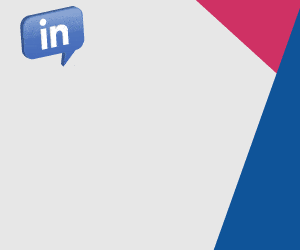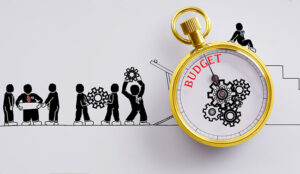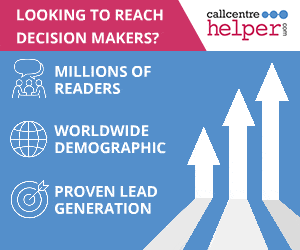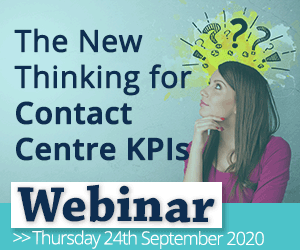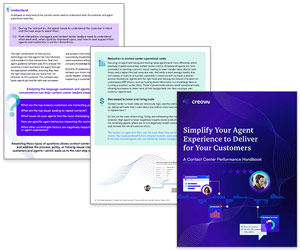Almost 70% of contact centre professionals agree that budget is their biggest barrier to stopping them from running their ideal contact centre – a perception that’s held strong across a decade, according to our What Contact Centres Are Doing Right Now Survey.
But do contact centres with bigger budgets really perform better? Perhaps not!
To explain why, consultant Dara Kiernan puts the spotlight on how tighter budgets can actually be a key driving force for more creative thinking and overall long-term success.
The Easiest Shortcut Is to “Throw Money at It”
I’ve been around long enough to know that “we can’t do that without budget” is one of the most overused phrases in our industry.
And I’ve also been around long enough to see that some of the best, most impactful ideas have come from people who had absolutely nothing to spend… and still made it work.
Why is this the case?
For starters, busy people – and we are all busy in this industry – often shortcut the problem-solving process.
And the easiest shortcut? Throw money at it.
- New platform? Buy it.
- Staff underperforming? Bring in a big-name trainer.
- CSAT scores down? Outsource the survey.
I’m not saying these things never work. But without the right thinking behind them, they can be like ordering a new sofa when the house is on fire.
“It’s the equivalent of painting over a damp patch without finding the leak.”
It looks fine for a while… until the damp seeps back through.
And it’s not just budgets that can make us lazy – technology can do the same. AI and Google can turn us into intellectual couch potatoes if we’re not careful.
If you do need to secure more budget for your contact centre, read our article: Proven Ways to Get More Budget for Your Contact Centre
You’re Forced to Think Harder When You Can’t Just Sign Off on the Next Shiny Thing
Here’s where I’ll be controversial: contact centres with tighter budgets often do better in the long run.
Why? Because when you can’t just sign off on the shiny new thing, you’re forced to:
- Think harder
- Test smaller
- Involve your team more
- Squeeze value out of what you already have
Some of the most successful process changes I’ve been part of came from teams who had virtually nothing to spend. They made smart, resourceful decisions because they had to. And those changes stuck – because the team had invested thought, energy, and ownership.
It’s a bit like AI. Fantastic when used well – but if every time you hit a challenge you immediately outsource it to a chatbot, your problem-solving muscles start to look like they’ve been skipping leg day.
We saw the same thing with search engines. The more we “just look it up,” the less we store in our brains. The answer is always one click away, so why bother remembering it? Trouble is, that habit kills the ability to wrestle with a problem until you crack it.
Operating with a small budget is like keeping those problem-solving muscles in shape. It’s resistance training for the brain – and the more you do it, the better (and faster) you get.
Your Time Is Worth More Than Your Budget
The same applies to how you upskill your team, as too often leaders forget that it’s your time people really want.
Frontline teams don’t want another generic e-learning module that evaporates from memory faster than a cup of tea in the break room. They want your attention, your perspective, and to feel like their ideas actually matter.
That doesn’t mean AI can’t help. In fact, used well, AI can take a lot of low-value repetition off a trainer’s plate so they can focus on the meaningful parts of development.
For example:
- AI-Led Mock Calls – Employees can practise customer interactions with an AI that adapts in real time to their responses, creating realistic, varied scenarios without tying up a trainer for every single run-through.
- Automated Quality Assurance (QA) – AI can review 100% of calls (not just a random sample), flagging specific trends, skill gaps, or compliance issues. Time can then be focused on targeted coaching where it’s actually needed.
- Personalized Microlearning – AI can serve each agent the right bite-sized lesson or refresher based on their performance patterns, so you’re not putting everyone through the same irrelevant training.
These tools don’t replace you – they amplify you. You can automate delivery, but you can’t automate connection.
The tech can set the table, but you still have to serve the meal!
If you are interested in where the latest tech is having the biggest impact, read our article: 10 New Ways Tech Is Helping Agents Right Now
Money Has Its Place… Just Don’t Replace Thinking With Spending!
I’m not anti-budget. Money has its place. But big budgets can create lazy thinking.
When there’s money to spend, the temptation is to shortcut the process and replace thinking with spending. It’s the same trap as using AI to get a “good enough” answer in seconds – it feels productive in the moment, but it skips the deep thinking that makes solutions last.
I’ve seen organizations spend huge amounts on big-ticket training programmes, external workshops, or flashy e-learning platforms without ever asking:
“What do we actually need to change?”
If the root cause is unclear, you can spend a fortune and still not move the needle.
The same goes for incentives. Massive prizes, lavish events, or extravagant giveaways might create a short-term buzz, but they can distort behaviours. People focus on the reward, not the reason behind it. And the agents who don’t win? Let’s just say “motivated” probably isn’t the word they’d use.
The risk? You start shaping behaviour around internal targets instead of customer needs. That’s when you get agents racing through calls to hit handle time, or upselling products like they’re on commission in a dodgy used-car lot.
Big budgets can be fantastic – but only if they’re tied to a clear, customer-first strategy.
Otherwise, you’re just throwing spaghetti (and money) at the wall and hoping some of it sticks.
The ‘Win a Car’ Moment Can Actually Do More Harm Than Good
Big budgets can also undermine motivational strategies with big-ticket prizes that do more harm than good – as I recently saw on LinkedIn from within a contact centre, where an employee appeared to win a brand-new car from their employer.
Now, that’s a headline moment. The crowd cheers, there’s huge excitement, and the marketing team probably high-fived all the way to the LinkedIn post scheduler.
But here’s the awkward bit: how do you top that? Once you’ve given away a car, next year’s “Employee of the Month” mug set doesn’t quite have the same ring to it.
We don’t know the competition rules, or how many people didn’t even get the chance to enter. And while we’d all like to believe every colleague was thrilled for the winner, human nature says otherwise.
Big public rewards can trigger all sorts of reactions:
- In-Group vs. Out-Group Thinking – “They” won, “we” didn’t.
- Social Comparison – Even if you’re happy for someone, you can’t help but compare your own recognition.
- Perceived Fairness – Was the opportunity really open to all? Was the process transparent?
And here’s the customer link: If your biggest incentives are tied to internal metrics like sales, upsells, or handle time, you might be encouraging behaviours that make the customer’s experience worse.
It’s the classic “win for me” vs. “win for them” dilemma – and customers can always tell which one you’ve chosen.
For advice on creating a great contact centre reward and recognition scheme, read our article: How to Improve Your Employee Reward Schemes – With Examples
Yet a Simple Question and a Packet of Biscuits Could Achieve Better Results
Here’s one of my favourite examples of achieving more with less!
We needed to improve quality scores across a large team. The expensive fix would have been new systems, outside trainers, and weeks of disruption.
Instead, we stopped, sat with the team, and asked:
“What’s getting in your way?”
Turns out, the QA guidelines read like they’d been written by a committee of ex-IVR designers – lots of options, none of them leading anywhere you actually want to go.
The Fix:
- Rewrite them in plain language
- Get the team to sign them off
- Run short peer-led refresher sessions during quiet periods
We didn’t spend a fortune. In fact, we kept the budget so low you could almost hear it squeak – but we weren’t that cruel.
Total Spend:
About the cost of a few packets of chocolate biscuits. We were operating on a shoestring, but we weren’t monsters handing out plain digestives.
Result:
Quality scores rose, morale improved, and the process lasted – because it was theirs.
If we’d outsourced it (or asked AI to spit out a generic “best practice” guide), we’d have got something neat on paper that nobody used. Instead, we got something messy, human… and effective.
So, do contact centres with smaller budgets actually innovate more? I’d bet my next coffee on it!
Not necessarily in raw numbers – yes, big budgets can buy efficiencies – but in engagement, creativity, and solutions that stick? I think the scrappy underdogs have the edge.
The Next Time a Problem Lands on Your Desk, You Might Just Find the Best Ideas Don’t Come With a Price Tag

So, the next time a problem lands on your desk and your first instinct is to sign off on a big spend… Give yourself and your team time before you give yourself a purchase order.
You might just find the best ideas don’t come with a price tag. And in a world where the easy answer is always a click away, that kind of thinking time is becoming your rarest and most valuable asset.
The conversation that inspired this piece came from one of my weekly Leadership Lunch sessions – open to all, free of charge, every Friday at 1pm. If you want to join the discussion, share ideas, and hear different perspectives from leaders across industries, you’d be very welcome. Reach out to me on LinkedIn for more information.
Written by: Dara Kiernan, Owner/Consultant/Author at KPI Services Limited
For more advice on improving your contact centre operations, read these articles next:
- How to Handle Customer Refunds Without Compromising CX
- Make Continuous Improvement Part of Your DNA
- 9 Ways to Create a Thriving Contact Centre Culture
Author: Dara Kiernan
Reviewed by: Jo Robinson
Published On: 15th Oct 2025
Read more about - Call Centre Management, Budget, Dara Kiernan, Employee Engagement, Employee Experience (EX), Employee Feedback, Incentives, Leadership, Management Strategies, Reward and Recognition, Top Story




